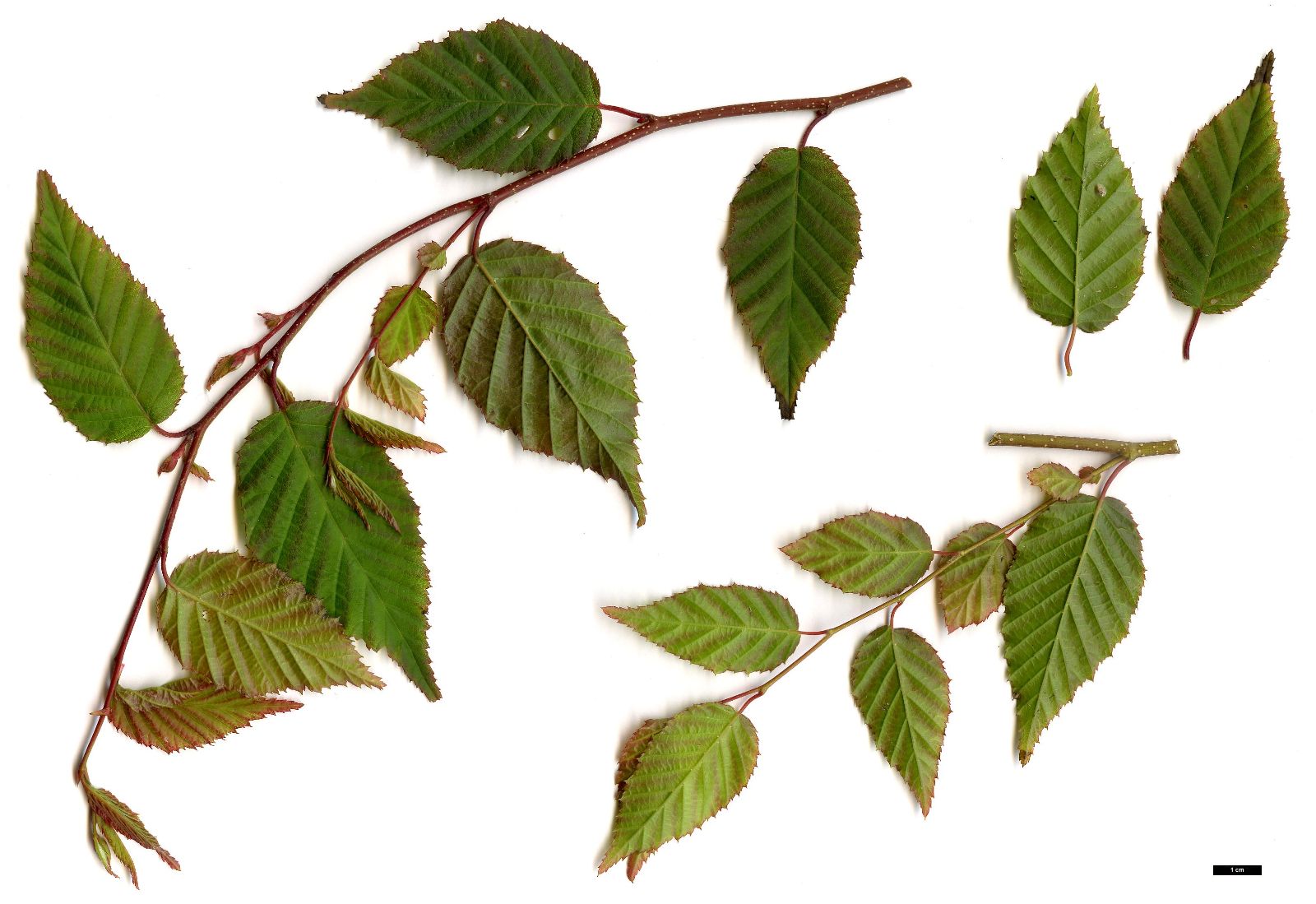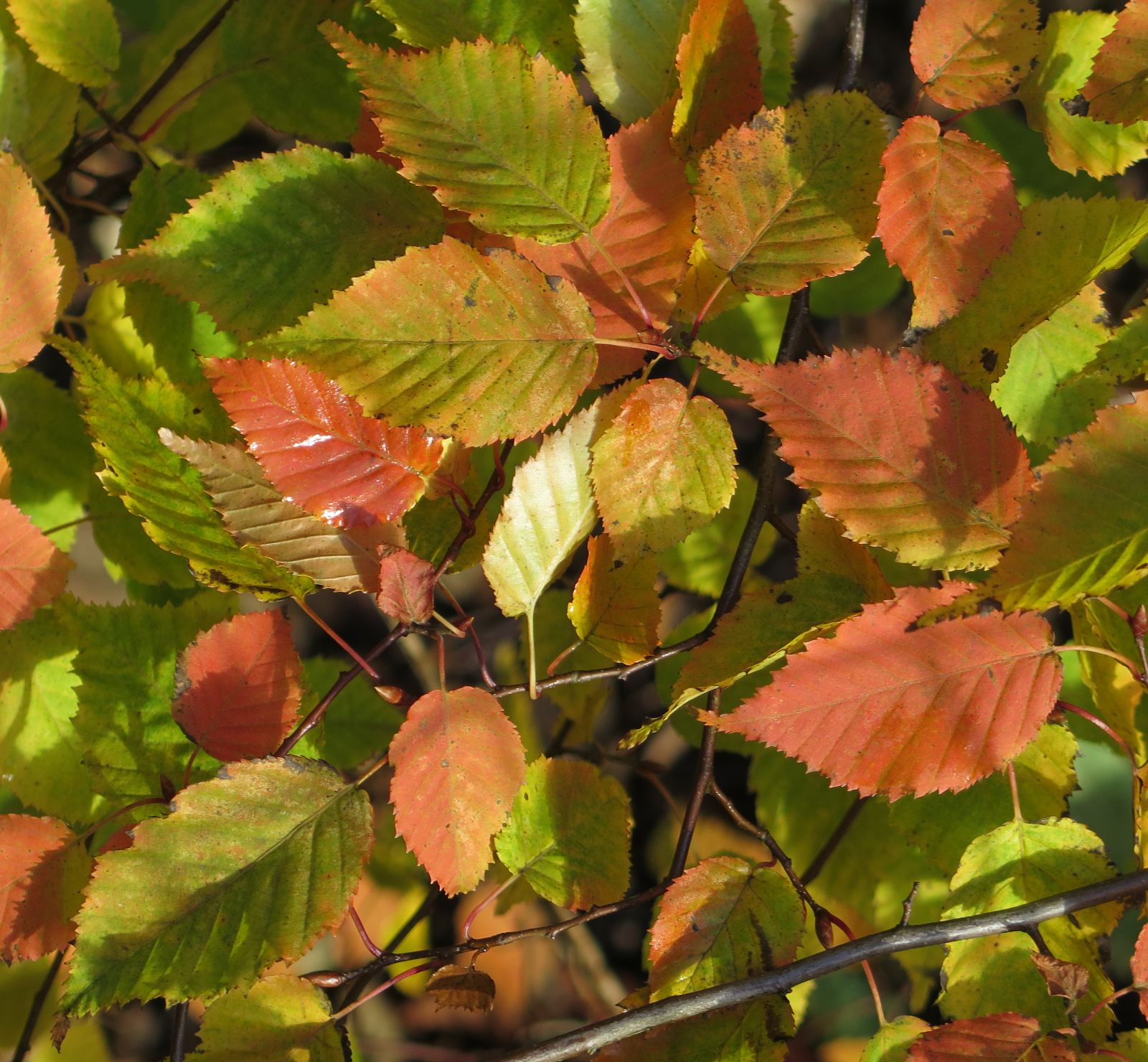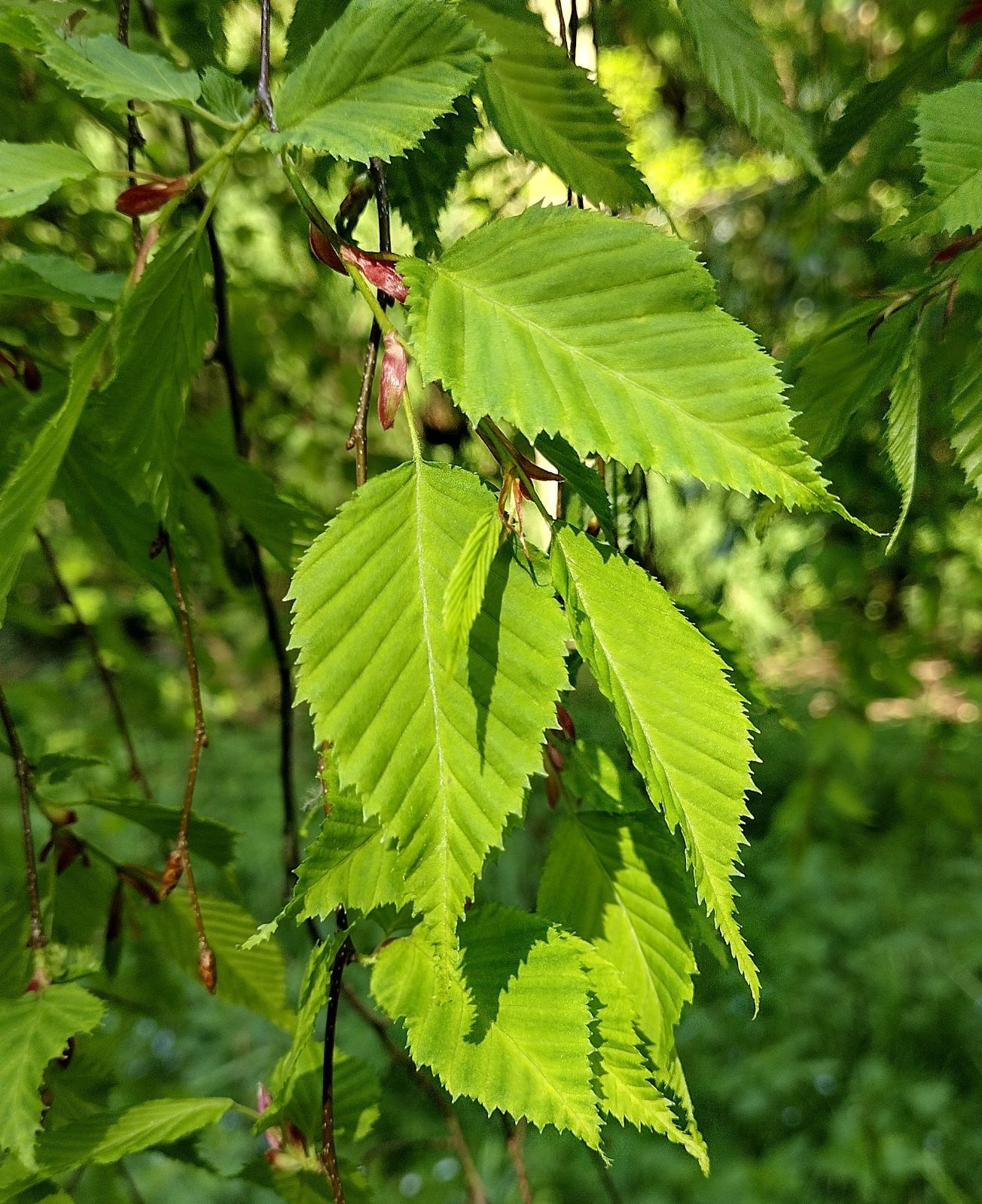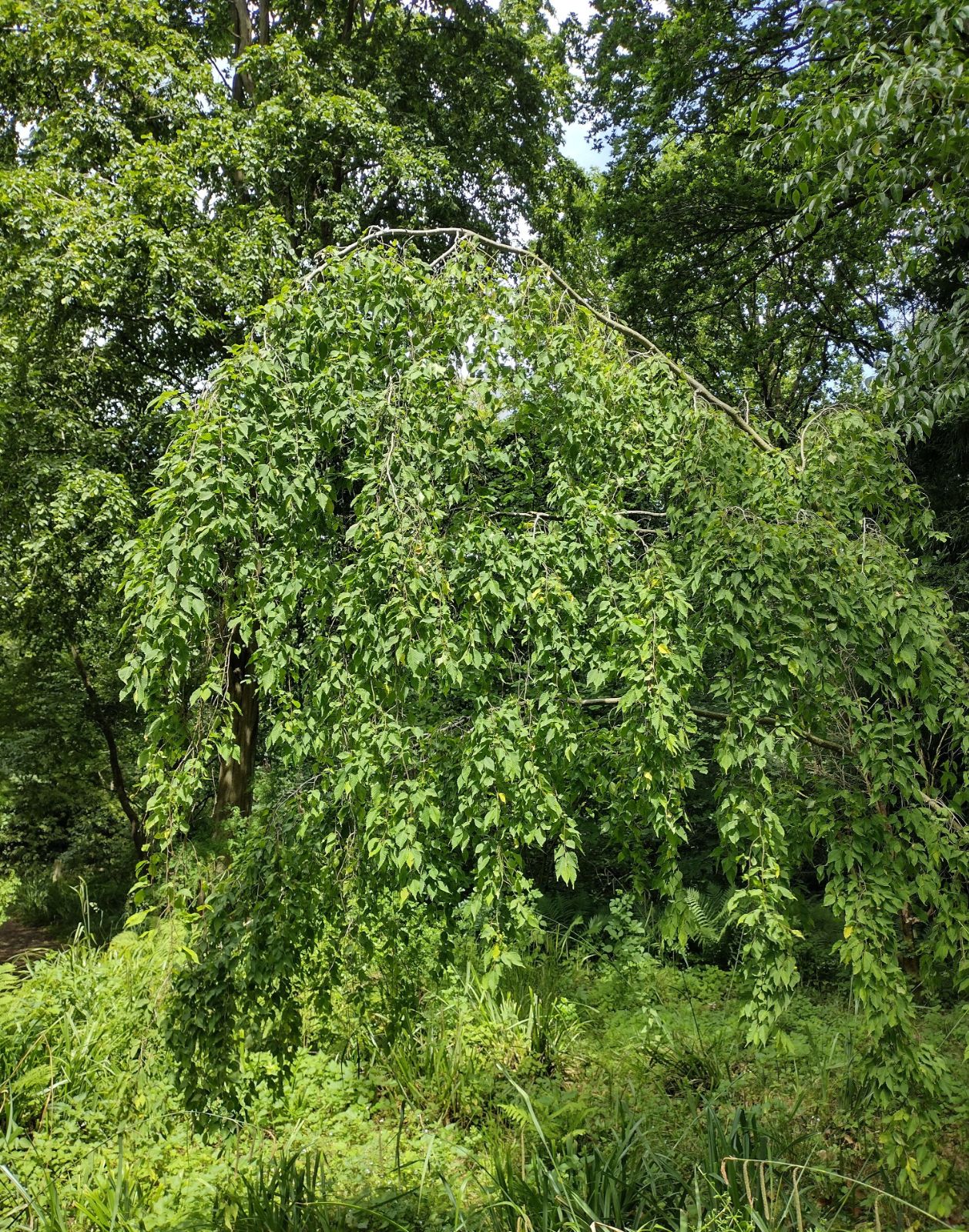Carpinus laxiflora
Sponsor
Kindly sponsored by
Lord and Lady Aldington
Credits
Owen Johnson (2022)
Recommended citation
Johnson, O. (2022), 'Carpinus laxiflora' from the website Trees and Shrubs Online (treesandshrubsonline.
Genus
Common Names
- Aka Shide
Synonyms
- Distegocarpus laxiflora Sieb. & Zucc.
- Carpinus laxiflora var. macrophylla Nakai
- Carpinus laxiflora var. longispica Uyeki
Infraspecifics
Other taxa in genus
- Carpinus betulus
- Carpinus caroliniana
- Carpinus cordata
- Carpinus faginea
- Carpinus fangiana
- Carpinus fargesiana
- Carpinus hebestroma
- Carpinus henryana
- Carpinus japonica
- Carpinus kawakamii
- Carpinus londoniana
- Carpinus mollicoma
- Carpinus monbeigiana
- Carpinus omeiensis
- Carpinus orientalis
- Carpinus polyneura
- Carpinus pubescens
- Carpinus rankanensis
- Carpinus × schuschaensis
- Carpinus shensiensis
- Carpinus tropicalis
- Carpinus tschonoskii
- Carpinus turczaninovii
- Carpinus viminea
Tree to 15 m. Bark grey, mostly smooth. Twigs with silky hairs at first only. Leaves ovate, 4–9 × 2–4 cm; base rounded to slightly cordate; apex abruptly narrowed to a long, slender point; very doubly serrated; glabrous except for axillary tufts and some silky hairs under the veins; lateral veins in c. 12 parallel pairs; petiole 1.5–3 cm. Fruiting catkin 5–8 cm long; bracts small (12–18 mm long), distantly borne, usually 3-lobed with the narrow middle lobe jaggedly toothed on one side. Nutlet dotted with resin. (Bean 1976).
Distribution Japan Absent from most of Hokkaido in the north South Korea And perhaps in North Korea
Habitat Mountain forests.
USDA Hardiness Zone 5
RHS Hardiness Rating H6
Conservation status Data deficient (DD)
Among the many often marginally distinct oriental taxa with Section Carpinus, C. laxiflora is a fairly recognisable species, differing from the Himalayan and Chinese C. viminea largely in terms of native range – C. viminea does tend to have less markedly double-toothed leaves – and otherwise appearing most closely related to the American taxa C. caroliniana and C. tropicalis, whose fruit-bracts are also asymmetrically three-lobed (Dong et al. 2022). The lax catkins of small green fruit and the rather long stalks – for a hornbeam – to its oval leaves, combined with its general daintiness and the grey bark with its faint, silvery snakes, slightly recall some forms of the snake-bark maple Acer davidii, while the leaves’ long, tail-like points, themselves jaggedly toothed, can resemble the points of the lobes of the leaf of some other maples, such as A. acuminatum.
The Chinese trees once grown in the UK as Carpinus laxiflora var. macrostachya Oliv. are now considered to belong within C. viminea, leaving C. laxiflora itself as a scarce plant largely confined to collections. (A possible anomaly concerns the population in Korea, where Plants of the World Online (Plants of the World Online 2020) suggests that both C. laxiflora and C. viminea are native. The Sea of Japan, and the broad region of northern China where neither species is known to grow, both present plausible barriers to prevent gene flow and to facilitate speciation. The differences between these very closely allied species present a less plausible barrier.) In the UK, Ernest Wilson’s collection W 7745 is represented by a 9 m tree at Borde Hill (Tree Register 2022), but other examples are much younger. In the hornbeam collection at Kew, BECX 160, planted in 1982, is 7 m tall, while a tree from KFBX 87 (1989) has luxuriated and reached 12 m by 2022 (Tree Register 2022). A plant from Miller & Hillier 325 was added to the Sir Harold Hillier Gardens in 1982, while at Sandling Park in Kent an accession from Chollipo Arboretum in 1989 has failed to thrive (Tree Register 2022). These four introductions derive from from the potentially complex South Korean population; collections of Japanese provenance include BSWJ 8772, which has reached three metres at White House Farm in Kent in 2019 (Tree Register 2022), BSWJ 10809, and BSWJ 11035, all offered by Crûg Farm Plants in 2022 (Crûg Farm Plants 2022).
Like many Japanese and Korean plants, Carpinus laxiflora probably prefers a more continental climate with warm summers, and can be very hardy. In the south-eastern United States, autumn colours are bright yellow and red (Dirr 2009), while the species thrives in protected locations in the Ottawa Valley of Canada (Stewart 2010). It is also grown at the Denver Botanic Gardens (Royal Botanic Garden Edinburgh 2022), and there is a particularly good specimen at the United States National Arboretum in Washington DC (Stewart 2010). In continental Europe, it is offered by nurseries in France, the Netherlands, Germany and Poland.
In the southern hemisphere, there is an example at Hackfalls Arboretum in New Zealand (Golik 2017).
'Pendula'
Synonyms / alternative names
Carpinus laxiflora f. pendula (Miyoshi) Sugim.
A Japanese selection with very weeping branches. An example in Ray Wood at Castle Howard, North Yorkshire was purchased in 1986 from Esveld in the Netherlands (as ‘Carpinus ‘Pendula”) and in a crowded spot has made a weak plant which arches over at four metres (Tree Register 2022; J. Grimshaw pers. comm.). Another grown by Michael Dirr at Chapel Hill in North Carolina was only 30 cm high in 2009 (Dirr 2009).
'Variegata'
An old Japanese sport with cream splashes and sectors on its leaves, grown at the J.C. Raulston Arboretum in North Carolina (J.C. Raulston Arboretum 2022) and in a private garden in Belgium (Gardenbreizh.org 2021), and now sold by Pépinière des Avettes in France (Pépinière des Avettes 2021). The latinate cultivar name is unlikely in this case to be legitimate.












